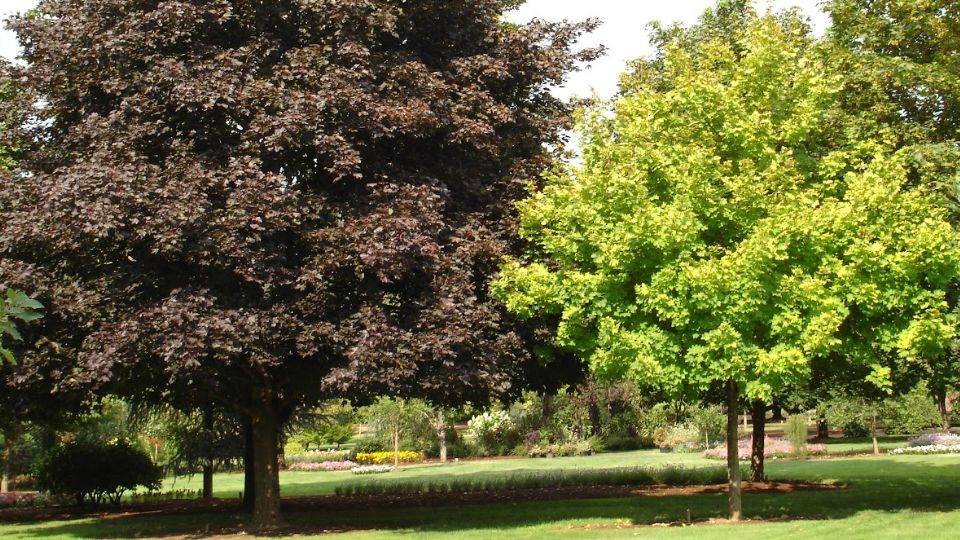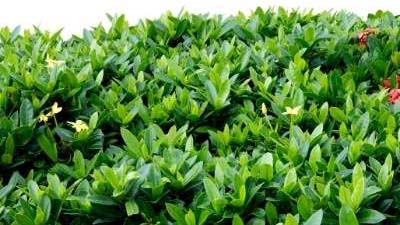Water-Wise Landscaping: Monitoring Irrigation with Probes
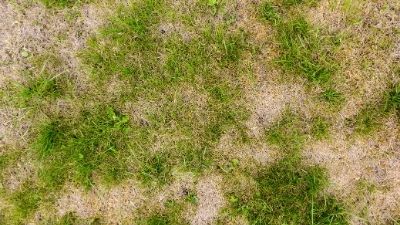
Monitoring the depth of wetting and uniformity of water application can improve water management and conservation. Various types of probes can be used to monitor soil moisture conditions both before and after an irrigation. Probes can also be used to check for compacted layers in lawns, tree planting holes and gardens. The advantage of probes is that they allow rapid inspection of conditions beneath the soil surface with minimal disturbance.
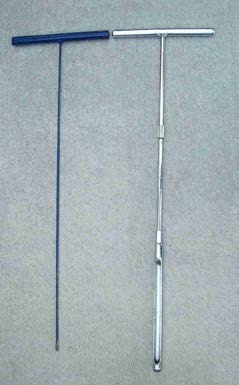
probe (right)
Probes
A tile probe is a solid metal rod with a pointed tip fixed to a handle. These probes are inserted into the soil but don’t allow a sample to be removed. Inexpensive tile probes can be constructed from a 1/4 inch diameter cold rolled steel rod welded to a 12 inch long section of 1 inch diameter metal pipe as a handle. Hollow tube or open-faced soil probes are used to remove intact cores of soil. Both types of probes can be purchased at certain landscape supply outlets, as well as from mail order sources such as the Ben Meadows Company (www.benmeadows.com) and Forestry Suppliers (www.forestry-suppliers.com). County Extension offices have a limited number of tile and soil probes available for loan or rent.
Monitoring Irrigation with Probes
Use a tile probe 1 to 2 hours after irrigating to monitor the depth of water movement. A tile probe enters moist soil easily. Resistance increases noticeably when the probe encounters dry soil. Stop applying pressure when resistance increases to a level where the probe begins to flex. Grasp the probe at ground level and remove it, noting how much of the probe was below the surface. This is an estimate of the depth of water movement. Sample in several locations to estimate the average depth of water movement. Using tile probes takes some practice; however, once you are accustomed to these devices you can rapidly and accurately assess the depth of water movement in soil.
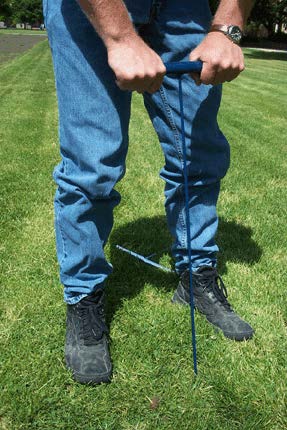
Use an open-faced probe to remove intact soil cores. Before irrigating, sample in several locations and inspect the soil to determine if it is dry or still moist from the previous irrigation. One to 2 hours after irrigating remove intact soil cores from several locations and look for a color change (dark to light) between wet and dry soil. This color change indicates the depth of water movement.
When irrigation is applied frequently and for short periods of time, it is common for soil to be wet to a depth of only 2 to 3 inches. Over time this limits plant rooting depth to a shallow surface layer. Additional water is needed to wet the soil to a greater depth and encourage deeper rooting. Less frequent but longer irrigation will help. If the depth of wetting exceeds 12 or 18 inches, the water is likely to move beyond the roots of many plants. For lawns, 6 to 12 inches of moist soil is sufficient. Gardens and established trees often root deeper than turf and can tolerate less frequent irrigations with more water to increase the depth of wetting to 24 inches (2 feet).
Tile and soil probes can also be used to monitor the uniformity of irrigation and determine if maintenance and improvements might be needed. Check the wetting front depth around and between sprinkler heads. If the depth varies, inspect sprinkler output rates and distribution using irrigation catch cups available from Utah State University Extension offices. Make improvements where necessary.
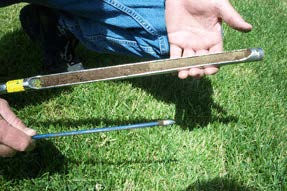
movement (~ 6 inches in this example).
Authors
Rich Koenig, Extension Soil Specialist; Kelly Kopp, Extension Turf and Water Conservation Specialist; Chad Reid, Iron County Extension Agent
Published June 2002
Utah State University Extension
Peer-reviewed fact sheet
Download PDF
Related Research




